| S I G H T S | tj|tl|in|ca|st |
T H E M A Y F L O W E R I I
Plymouth, Massachusetts
Okay, you want the complete story about the Wampanoag Indians? This display is only showing one facet of their existence. Prior to the Pilgrims landing in 1620, from 1616-18, in and around the area soon to be named Plymouth, MA, a fair share of the Wampanoag People perished from the plague that was likely brought to the area by European traders and fishermen. So by the time the Pilgrims arrived in 1620, it was pretty easy for them to claim the land that once supported a thriving Wampanoag community.
The Pilgrims were a rather prejudiced and intolerant lot. They had no problems with "taking over" because they believed the "New World" was an untamed place occupied by backward, inferior heathens in need of Christianity. Pretty self-serving these Pilgrims were.
I don't mean to talk smack about the Pilgrims, but this was the ugly reality in 1620. It's always good to get the whole picture of things. To the credit of Pilmoth Plantation, the organization that runs the Mayflower II Museum, I got all this information from their website. I can understand not posting the whole story on the tour display because a good portion of it is a pretty big downer. But, they really do need to get some Native American Indian models for this display, eh?
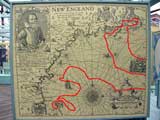
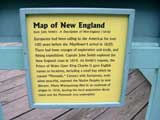
Here's an old map of the New England Coast. Too bad they didn't plot the Mayflower's route to America. To fill in the empty blanks, I've taken it upon myself to plot The Mayflower's most likely course had I been tasked with the ship's navigation. As you can see from my route, I don't know a thing about how to use a sextant, and since GPS didn't exist in 1602, I just wing it.
At first I go too far north, encounter land, sail around for a bit looking for a suitable bay, find none, go back out to sea and unknowingly head back to England. I reach England and with a really red face, turn around and make my way back west. I eventually make landfall in Cape Cod, but not before getting even more lost and disoriented. The good news is they didn't throw me off the ship.
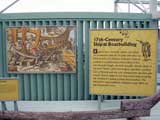
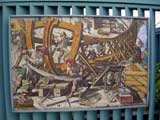
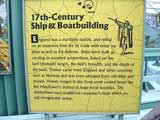
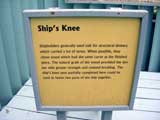
Here's a display extolling the fine craft of shipbuilding. Did you know that ships of yesteryear had knees?
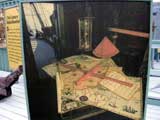
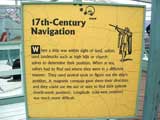
17th-century navigation involved a compass, a sextant, and constant praying of the rosary.
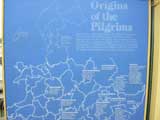
Here's a map indicating where the 102 Mayflower Pilgrims originated from. The name of every passenger is listed under a respective province heading. Sorry, the picture is too blurry to decipher.
<<<
Page
1
2
3
4
5
6
7
>>>
Photo Gallery
Travel Log | Reference
Prev Sight |
Next Sight
|